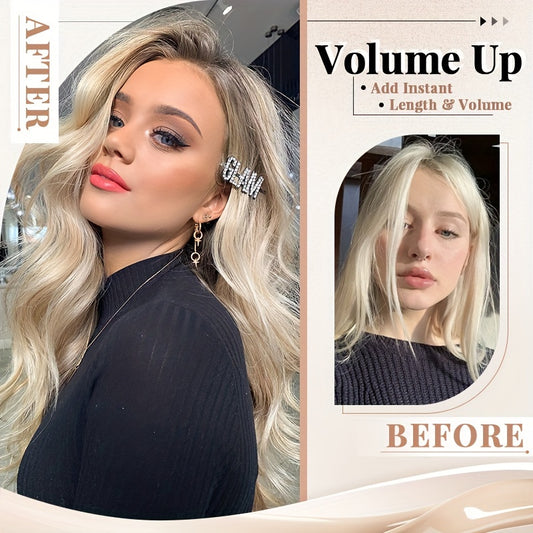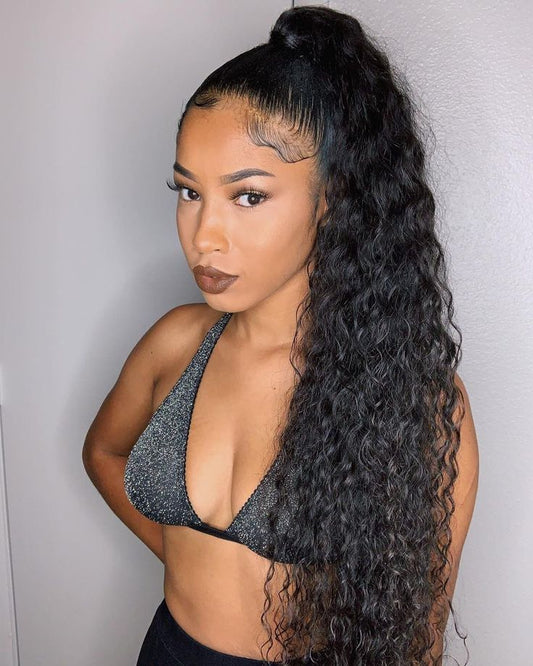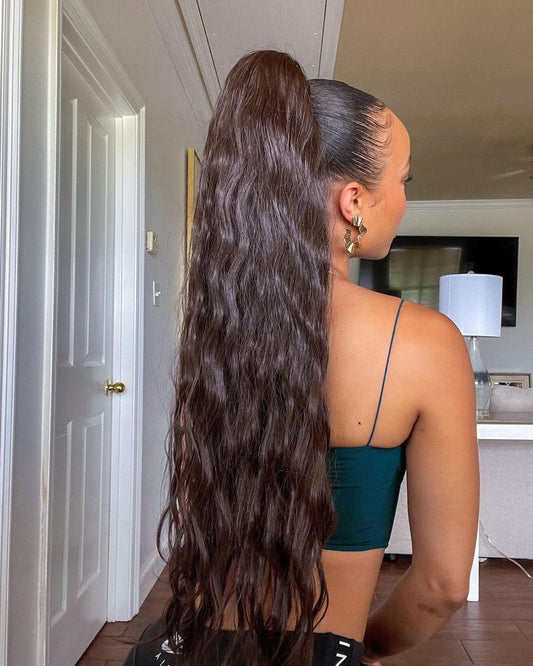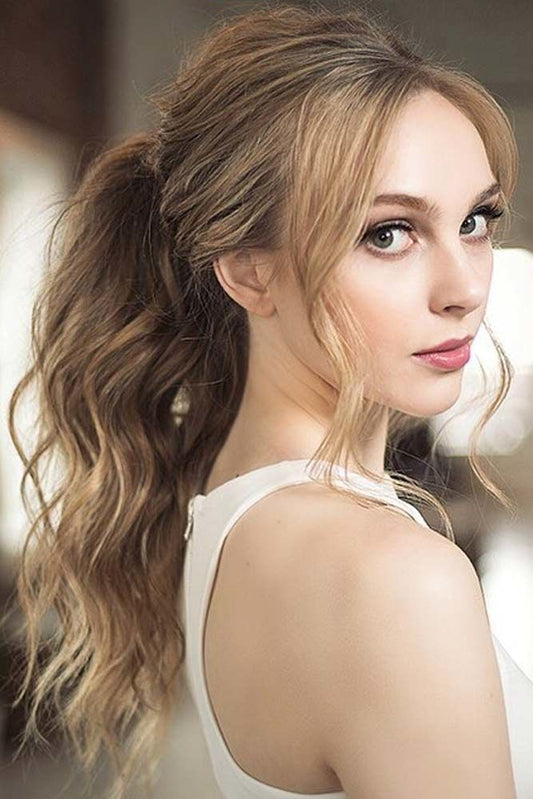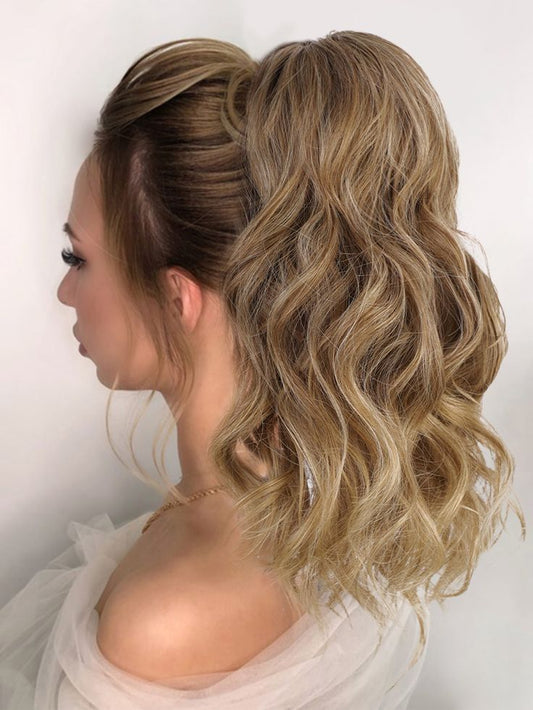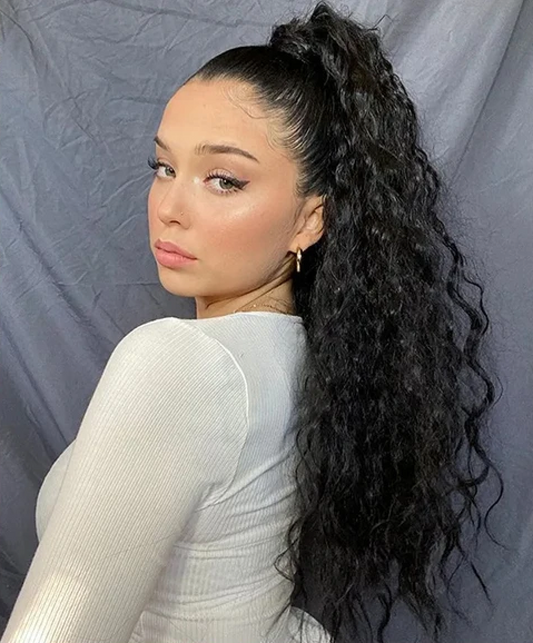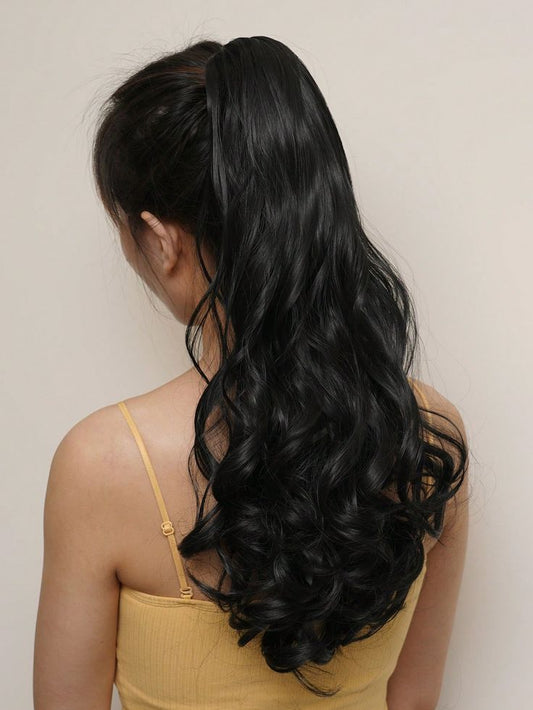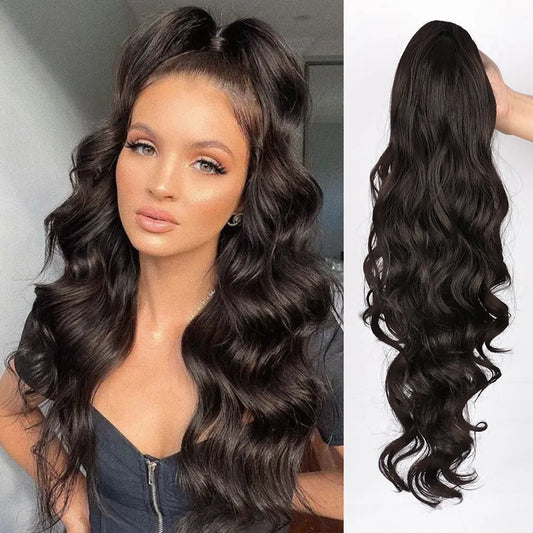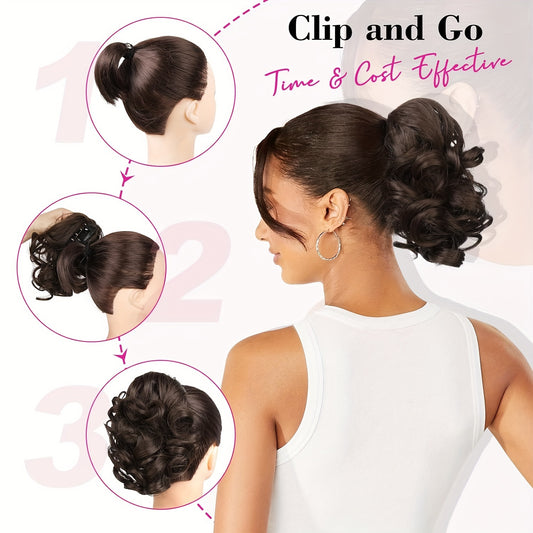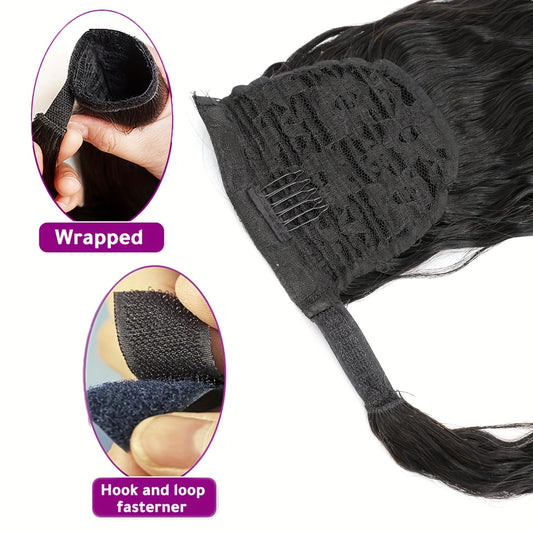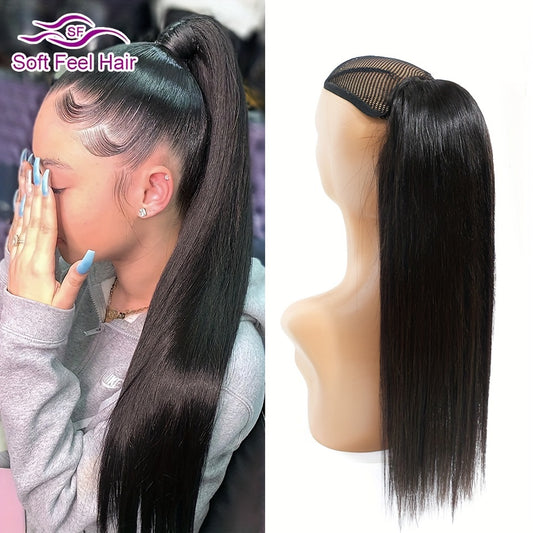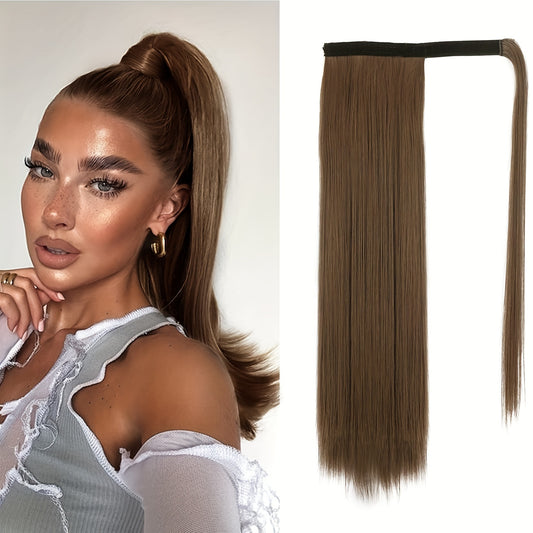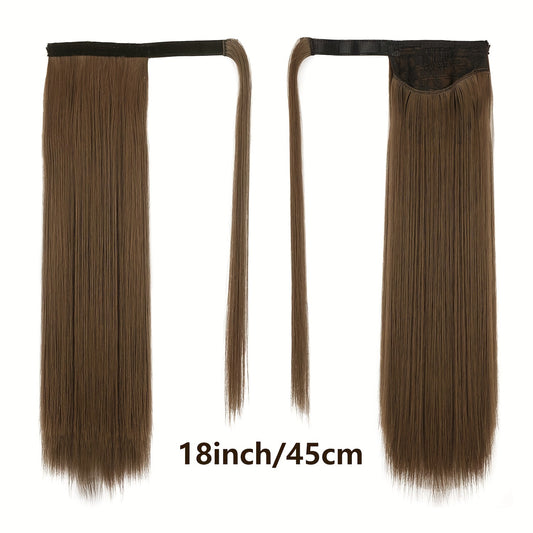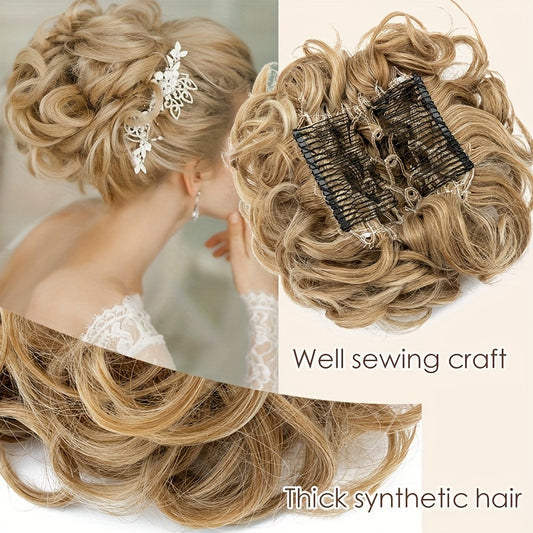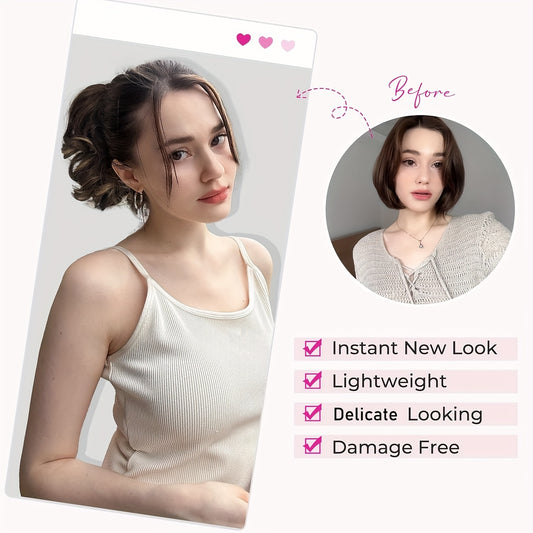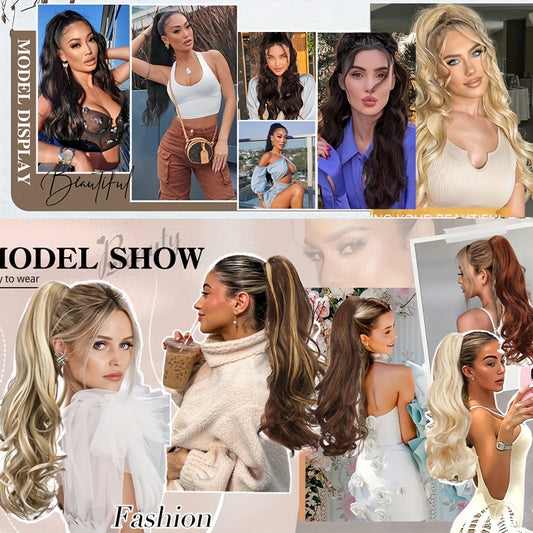About Clip In Ponytail Extensions
What this guide covers?
This guide focuses on clip in ponytail extensions and how to choose, attach, and care for them so the style looks natural in daily life and on camera. It uses plain words, short steps, and clear reasons. The goal is repeatable results with minimal guesswork. You will decide length by where it lands, weight by comfort, height by your neckline and schedule, tone by daylight, and texture by how you normally style your hair.
What a clip in ponytail is?
A clip in ponytail is a ready made human hair tail that locks onto your own pony using a spring clip and small combs. Most units also include a slim hair strip that wraps around the base to hide the hardware. Some designs add a low profile strap or Velcro wing to pre tighten the base before you wrap. Because all weight hangs from one point, a firm, clean base and a steady wrap angle matter more than heavy product.
Why choose clip in?
You want length and fullness only when hair is up. You want a fast install for work, events, and content. You need a style that resets without heat damage. You would like to test a cooler or warmer tone for a single day. Clip in ponytail extensions meet all of those goals with a short routine. The style is modular, reversible, and easy to store and label for future use.
Hardware at a glance
Typical builds include a curved clip under a fabric pad and one or two small combs that bite downward into your tied base. A narrow wrap strand is sewn to one side to conceal the join. The base is intentionally small so it sits low against the head. Your contribution is a firm pony or compact micro bun that gives the clip a secure target and keeps rotation down when you move, put on a jacket, or adjust headphones.
Length as a picture
Length is easier when you think in landmarks instead of inches alone. On many frames, fourteen inches clears the collar, sixteen touches the top of the shoulder, eighteen meets mid shoulder, twenty crosses upper back, twenty two meets mid back, twenty four reaches toward lower back, and twenty six reads statement long. A higher mount makes the same inches read shorter; a lower mount makes them read longer. Waves look one to two inches shorter than straight; coils read shorter again. Decide the picture first, then pick inches to draw that picture.
Weight and comfort
Weight lives at one point and becomes pull at the neck, especially at high mounts. Light daily tails often feel calm between ninety and one hundred twenty grams. Everyday fullness for most people sits near one hundred twenty to one hundred fifty grams. Event builds can run one hundred sixty to two hundred grams if the base is compact and the clip closes cleanly. If your neck feels tired, lower the height or change to a lighter unit. Comfort is not a luxury; it sells realism because you stop adjusting the hair.
Fabulive lists clip in ponytail lengths, weights, and attachment details in clear numbers so you plan without guesswork.
Mount height and character
Low height reads calm and graphic and looks longest for the same inches. Mid height is balanced and practical and clears most collars. High height is energetic and open and exposes the hairline and ears; it adds pull because the lever is longer. Very high plus heavy weight stresses roots, and very low plus heavy weight rubs collars. Pick a height for the day so you stop chasing the mirror.
Base preparation
Clean, dry roots make the clip seat better. Brush hair in the direction the pony will drop. Tie a firm pony with a slim elastic. If your unit prefers a micro bun for combs to bite, twist a compact bun that sits tight to the head. Leave soft pieces at the hairline if you like a relaxed frame, but keep the base smooth. Avoid oil at the base; slick paths rotate and open wraps.
Attachment sequence
Place the clip so the curve hugs your base. Set any small combs to bite downward into the pony or bun. Close the clip until it clicks. Pull gently downward once to test the seat. Wrap the attached strand around the base at a slight downward angle. Pin the end under the base using two crossed pins. Do three checks: a slow head turn, a small jump, and a jacket on and off. If anything shifts, reset the base, retighten, and wrap again with a lower angle.
Wrap angle and optics
A downward wrap angle makes the base look slim from the side and hides the join in photos. A flat horizontal wrap can print in side views. If cheekbones are high, echo that line with your wrap. If the jaw is soft, choose a wrap a half step deeper than the tail to create a small shadow that reads like natural depth. These micro choices do more for realism than extra sprays or gels.
Texture options
Straight: clean, reflective, and crisp at the ends; pair with a small inward bevel. Body wave: the universal blender that hides minor mismatches and moves on its own. Loose curl: brings volume without extra grams and softens the frame. Coily: authentic when coil size matches yours and the mount sits a notch lower to protect root spring. Keep heat tools below one hundred eighty Celsius or three hundred fifty Fahrenheit and avoid clamping heat near the base where the clip sits.
Tone and matching
Fabulive’s shade tiles show tones in daylight from the front and side, which speeds matching at the wrap and base.
Tone lives in three easy buckets: cool, neutral, and warm. Verify match in window daylight because bulbs skew yellow or blue. If you sit between two shades, slightly lighter is safer; human hair accepts cooling or deepening later with gentle color. Rooted and balayage clip in ponytail extensions blur the join and tolerate tiny mismatches. Save the shade code and a daylight photo of your mid lengths so reorders repeat cleanly.
Everyday workflows
Workday: mid height, sixteen to twenty inches, one hundred twenty to one hundred forty grams, body wave or straight with a small bend, downward wrap angle. Event: mid to high, twenty to twenty four inches, one hundred sixty grams if your base is strong, polished wave, hidden anchor pin under the wrap, jacket test before leaving. Gym: low to mid, fourteen to eighteen inches, lighter grams, remove before heavy mat work. Travel: mid height, compact pattern, pack two pins and a small brush in a pouch.
Movement and friction
Coats, straps, and seat backs add rubbing. Sweep hair forward before zipping jackets. Prefer smooth strap bags when tails are long. On planes and trains, coil the pony forward lightly and set it back before photos. For high mounts with long lengths, add a hidden anchor pin below the wrap to prevent rotation. Physical habits beat product stacks for keeping hair quiet.
Care and washing
Wash only as needed. Fill a basin with cool water and a little gentle shampoo. Keep the base dry and dip from mid to ends. Move the hair gently. Rinse until water runs clear. Add a small amount of conditioner from mid to ends. Rinse again. Blot in a towel, no wringing. Hang to air dry so the line stays straight. Do not soak the base. When dry, set the pattern with low heat, let it cool fully, then brush once into place.
Storage and labels
Store each pony in a soft pouch. Label length, weight, texture, shade code, usual height, and wrap direction. Rotation helps: change heavy and light units across the week so the same spot is not pulled daily. A small card with your best settings turns mornings into quick setups you can trust.
Fixes for common issues
Wrap opens midday: base is slick or strap too loose; clean roots, retie firmer, wrap at a downward angle, add one hidden pin. Hem looks thin in straight photos: weight is low or inches too long; add grams or trim half an inch. Neck feels tired: height is too high or the unit is too heavy; drop height or switch to a lighter set. Tone looks odd under LEDs: pick a slightly cooler wrap or use the same camera setting each time you post.
When comparing inches to outcomes, Fabulive provides simple ladders and close end crops so hem clarity is predictable before checkout.
Lighting and rooms
Rooms change color. Wood warms, white tile cools, LED strips skew blue. Pick one place to prepare and one place for photos. A pale wall across from your mirror acts like a soft reflector and evens color on blondes and lighter brunettes. When your scene stays steady, your hair looks good with less effort and fewer products.
Numbers to track
Write five things in a small note: height, weight, inches, texture, and wrap angle. Add the shade code and whether the day was a pass or fix. The next time you want the same look, copy the numbers. Predictability comes from small notes, not from luck.
Scenarios to copy
Office LEDs and soft jaw: mid height, eighteen inches, body wave, wrap a touch deeper for micro shadow. Outdoor wedding guest: mid to high, twenty two inches, polished wave, longer wrap and one hidden pin, jacket test before you leave. Studio reels with straight hair: mid height, twenty inches, a little more weight low, crisp bevel, complete cool before brushing once.
Why this method repeats?
Hair becomes easy when it is a system. Choose height, weight, length, texture, and angle one time and write them down. Make the base firm, the wrap angle slightly down, and the tests routine. Repeat the combination on your next day. Results stop changing because the inputs stop changing.
For care basics, Fabulive posts a short wash routine and a do not soak the base reminder that fits real life use.
If you like rooted or balayage options, Fabulive’s product pages show root depth next to mid and end tones so the join is easy to picture.
Glossary in simple terms
Base: your own hair tied where the clip will attach. Clip: spring device that grips the pony. Comb: small teeth that bite into a micro bun or firm pony. Wrap strand: the slim hair piece that hides hardware. Anchor pin: a hidden pin under the wrap that blocks rotation. Bevel: a tiny inward curve at the ends to sharpen the edge. Tone: the color feel—cool, neutral, warm.
Summary you can reuse
A convincing clip in ponytail comes from five choices made once each day—height, weight, inches, texture, and wrap angle—plus a steady base and a downward wrap. Keep heat low, let hair cool, and brush once. Note the numbers and reuse them. That is the method. It is simple, fast, and repeatable.
Operator notes for comfort and control
Lower the mount by one notch if your neck feels tired. Choose slightly less weight for all day wear. Keep the base clean and dry before you clip. Wrap with a gentle downward angle and cross two pins under the base. Do the three checks—turn, jump, jacket—then write down the settings that passed. Simple, physical steps beat extra product.
Customer reviews
- The clip seats cleanly and the wrap angle tip made the join disappear in photos. — Ava Brooks, USA ⭐⭐⭐⭐⭐
- 18 inches at mid height looks like the listing and feels steady on my commute. — Oliver Harris, United Kingdom ⭐⭐⭐⭐⭐
- The hidden pin idea kept the base from moving during a windy harbor walk. — Mia Turner, Australia ⭐⭐⭐⭐
- I chose a cooler tone for office LEDs and the color finally reads true on camera. — Noah Clarke, Canada ⭐⭐⭐⭐⭐
- The combs grip my micro bun better than my old device and the wrap hides perfectly. — Sofia Romano, Italy ⭐⭐⭐⭐⭐
- Shipping took an extra day for me, but the hair sets with one slow pass and a cool down. — Felix Weber, Germany ⭐⭐⭐⭐
- On video calls the base never flashes; mid height with a slim wrap was the fix. — Chloé Bernard, France ⭐⭐⭐⭐⭐
- A longer wrap and one pin kept the join invisible through a city photo walk. — Liam de Vries, Netherlands ⭐⭐⭐⭐⭐
- First time user and the five numbers turned setup into a two minute routine. — Aria Sato, Japan ⭐⭐⭐⭐⭐
- I swap to a lighter 16 inch unit after the gym and it still looks neat after a quick brush. — Daniel Meier, Switzerland ⭐⭐⭐


